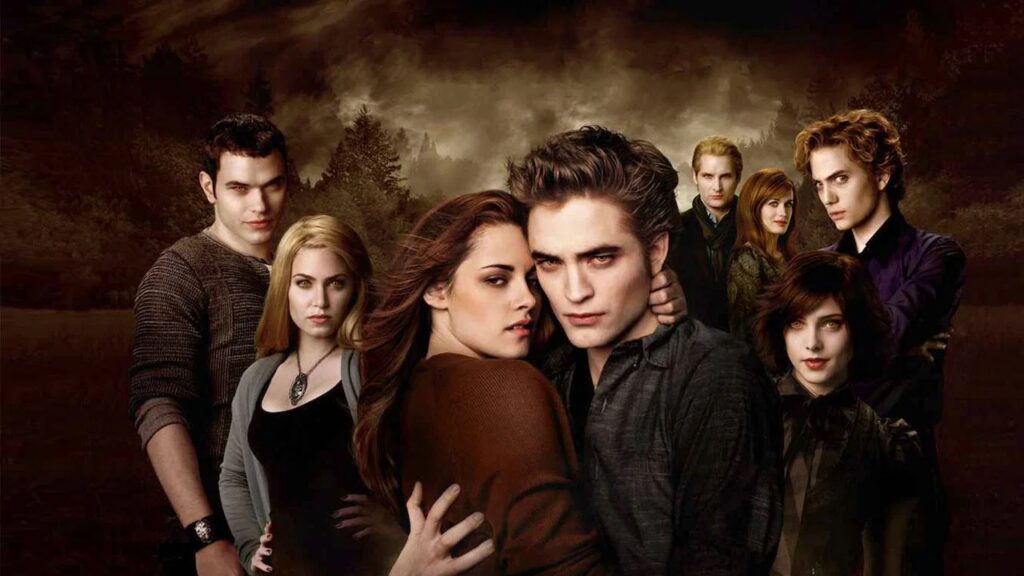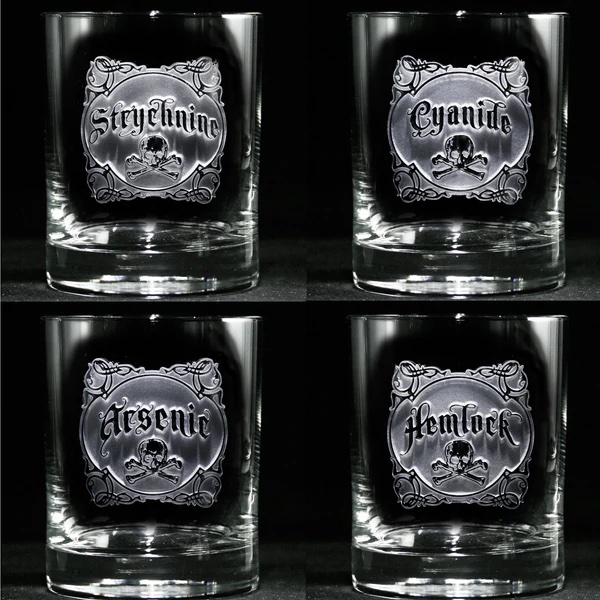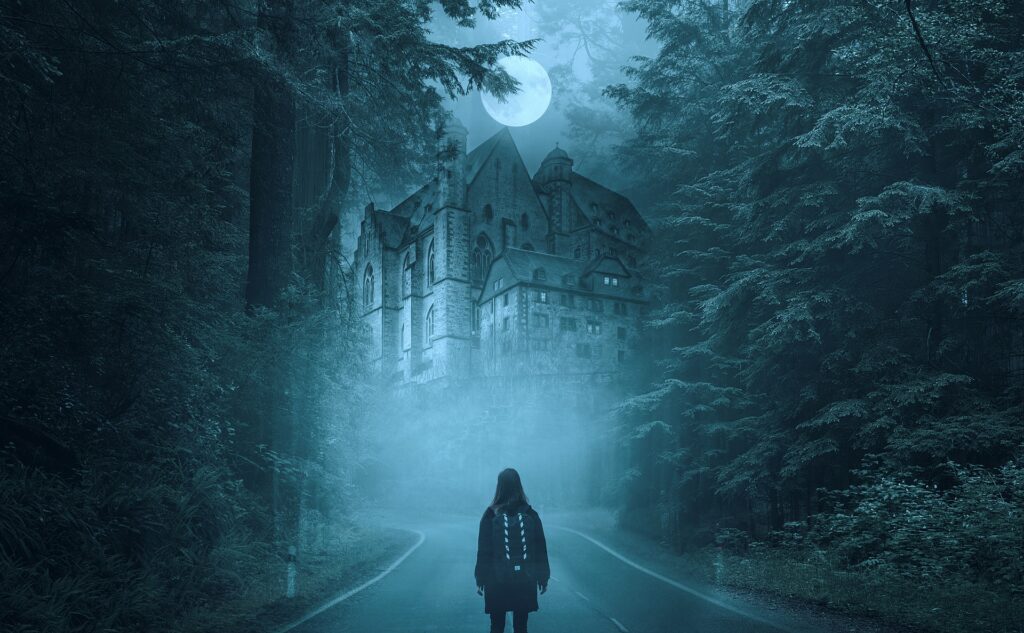We’re going to step into dangerous waters in this post. Waters teeming with diehard Twilight fans and adjoining creek sides crawling with ferocious anti-Twilight adherents. But I’m not known as a fearless woman for nothing, so here goes.
And just as a note: I see both sides; writers tend to. I see the allure of the series. The ambiance, setting, character relationships and vampiric underworld that are so interesting to fans. But I also see the less-than-stellar writing and the ways in which Bella came across as a weak heroine.
[Last year, I released a YouTube video about how to write powerless characters, especially female ones, in such a way that readers will love them. In that video I discussed what should have been done differently with Bella’s character. If you’re interested in that, you can find it here.]

The key to answering this question is to review the themes of each of the books. What are they each exploring? What ideas are they putting forward behind the facade of fiction?
Beware: Plot Spoilers Ahead!
Twilight
The first book is an introduction to the world of Edward Cullen. Our heroine, Bella Swan moves to Forks, WA to live with her father while her mother travels with her new husband. As Bella seeks to find a place in this strange area that’s so different from her life in Arizona, she meets the Cullen family who are also new transplants to the area and who are also seen as outsiders.
Bella’s attraction to Edward and his to her is clear from the beginning. But something is different about Edward. He is drawn to her but then avoids her. He has an otherworldly aura about him. He is unnaturally cold and fast and strong. He seems to live on a plane outside of the human world in Forks that Bella dislikes so intensely. It isn’t surprising when she learns that he is a vampire.
The first book in the series explores death from a number of angles, including the death of Bella’s father’s friend, Waylon Forge (added in the movie, but not in the book). But the most important consideration of death is Bella’s awareness of her own mortality.
The movie is book-ended by a thought that Bella has: “I had never given much thought to how I would die, but dying in the place of someone I love doesn’t seem like such a bad way to go.”
It is this heightened awareness of her impending death that Bella faces in the first book. As she reflects on her ignorance in the matter, Bella comments that love is a worthy reason for death. This is, of course, foreshadowing. It is also the theme of the book:
Dying for someone you love is worthwhile.
New Moon
The second book deals heavily with time. The story opens with Bella’s eighteenth birthday. Rather than cause for celebration, Bella is overburdened by a sense of her own aging. Compared to the Cullens’ eternal youth, she is now focused on the clock. She has a vision/ dream of herself as an old woman at the beginning of the story. At the end she races towards the Volturi’s headquarters under the clanging of the massive clock tower.
This is complicated by the fact that Edward, aware of the potential danger to Bella that being around him and his family could cause, has separated himself from her and disappeared. Because of this, Bella pursues her friendship with her childhood companion, Jacob Black. He is her new moon. Not her sun, but still a light to show her the way.
As many have noted, a new moon is a time of reflection and introspection. There is much of that in this chapter in Bella’s journey. The problem of course is that the light of Jacob’s moon shows her the truth: she loves Edward much more than she loves Jacob.
Bella spends her time with him, envisioning her life with him instead of Edward. She gets to know his tribe, his family and the legends that surround them, including that of their werewolf ancestry. In many ways, being with Jacob is the safer, easier option. They’ve known each other for years. She could be a normal human with a fairly standard life if she were to choose him.
But at the same time, there are still dangers. She sees the damage that Sam Uley caused to Emily in a fit of rage and learns there is always a risk in love. Her lesson is the theme of this book:
Love is always a risk, but the danger must be accepted or the love lost.
Eclipse
Once the third book in the installment opens, Edward and Bella are talking marriage. Edward is committed to marrying her. And Bella now knows that Edward is her only love, but she’s reluctant to marry him when she’s so young. Regardless, she wants him to transition her into a vampire to stop her from aging, something that he views as the destruction of her soul.
There are a couple of things going on in this book. The first, of course, is the surface competition between Edward and Jacob. Jacob knows that he has lost, but he’s fighting for one more chance to prove to Bella that he’s the one who’s right for her. Meanwhile, Edward knows that he has won, but he’s fighting to win Bella as his fiancée. Thus many will argue that the title refers to Edward eclipsing Jacob as the future man in Bella’s life.
And that’s true in part…but to a lesser extent.
What’s really happening in this book/movie is a comparison of Bella’s human life with a future, possible vampire one. The story begins with the transformation of Riley Biers by Victoria, Bella’s adversary. Riley goes on to live a tragic existence, used, manipulated and then thrown away after spending all of his vampiric life dwelling in dark corners of the streets of Seattle.
Meanwhile, Bella visits her mother in Florida and, while there, realizes that the sun-soaked pleasure will never be hers if she transitions into a vampire. She then graduates from high school and celebrates with her classmates at the Cullens’ home – a very positive, human moment. In these scenes, Bella is faced with the extremity of what she will lose if she continues with Edward.
Later they stage the battle and Bella camps out on the mountain. As a human, she nearly freezes to death in the cold. This is a complex scene. It shows Bella her vulnerability as a human and the gain that would be hers as a vampire. However, it’s Jacob who is able to make her warm and safe, which presents the opposing side of the argument.
At the heart of this is an argument for and against losing her mortality for the sake of an eternity as a vampire. In the end, Bella tells Edward that she was always meant to be a vampire; that that’s who she is and where she belongs, whatever the cost. That is the theme of this book.
[For Bella] The gains from being a vampire eclipse the benefits of a human life. [or: It’s better to be who you were meant to be than to try to fit into a normal mold.]
Breaking Dawn
Bella gets married. Ahh…love at last. But there’s a hitch, of course. An unexpected baby. And, once again, Bella is forced to make a decision to either save herself or risk death for someone else; this time, for the sake of her unborn baby.
The movie divides this book into two installments, but it’s really just the story of Bella’s life-death-life journey. She dies, as she postulated in the first book, in the place of someone she loves. But rather than dying for her mother or Edward, as she had expected, it’s this new baby who claims her life.
Edward manages to transition her at the eleventh hour [and fifty-ninth minute] and Bella begins her immortal life as a part of the Cullen clan, as Edward’s wife, and as a mother. It is truly a new dawn for her.
But there’s a problem…the Volturi. They’re back. Not for Bella. No, they love Bella. They want her (and Alice) to join them. Rather, it’s the baby that they want to destroy. Now Bella has to fight again. This time she isn’t fighting to maintain her human life or avoid death. She’s fighting to avoid the destruction of her family.
There are some interesting threads though related to the idea of exposure. Whereas the Cullens would naturally choose to move every few years and flee the exposure that their lack of aging would attract, they find themselves compelled to stay. Now Bella and Edward have to join their lives with her father’s life as a human.
In many ways, this is the dawn that breaks. Rather than hiding in the twilight, concealing themselves, Bella is now stepping out into the dawn and risking unwanted attention for the sake of her family.
I see a couple of themes in this book/ movie:
Family is worth dying for [mortally and eternally]
And:
Vampires and humans [and other creatures like werewolves] can coexist without hiding from one another
Is it Gothic?
Now that we’ve boiled down the segments of this story, it’s fairly easy to see some commonalities. Clearly there’s a theme about risk and a willingness to die for love across all of the series. And also a theme of embracing and not hiding your truest self.
But are these Gothic?
If you’ll recall, a Gothic theme is an irrational one. It deals with spiritual or psychological matters that can’t be known empirically. These themes can’t be reasoned.
It would be hard to argue that any of the themes in the Twilight series are Gothic. Yes, there are vampires and, in a deeper sense, the vampires symbolize the truest self of a person; that self that may not fit in or be accepted by the rest of society. And yes, Bella learns who she is and that she shouldn’t avoid or hide it, regardless of the cost. But is this a deep spiritual question?
I believe that it isn’t.
The matter is a bit harder because this is technically Young Adult fiction. For a group of pre-teens/ teenagers, this concept may lean towards an irrational concept. But by and large, this story is about love and community. About sacrificing oneself for those you value and the gains that come from that. Those are lovely ideas worth pursuing, but they aren’t Gothic.
So, no, though there are things I love about Twilight, I don’t think of it as a Gothic series. But let me know what you think. Did you love the books or hate them? Do you believe they’re Gothic?
If you enjoyed this post, share it with your friends!








